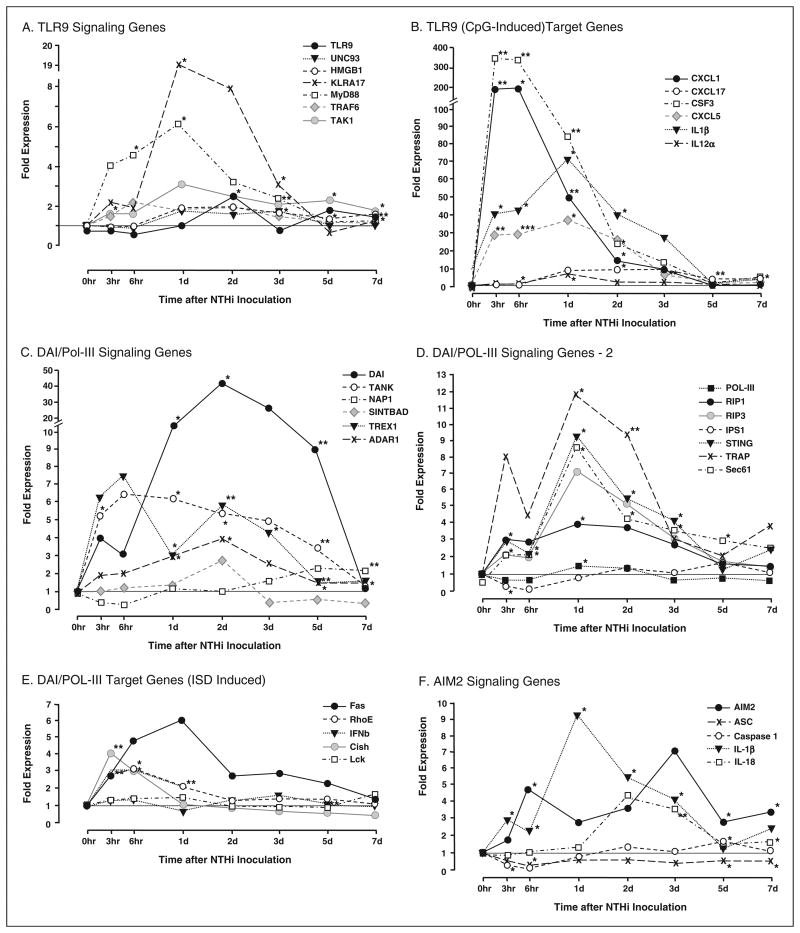Figure 2.
Middle ear expression of genes related to DNA sensing in wild-type mice during OM, assessed by DNA microarray. (A) The ME expression of most genes involved in TLR9 signaling (see Figure 1) was minimally affected by NTHi. Exceptions were KLRA17, a negative regulator of TLR9 signaling, which was strongly (18×) up-regulated during OM, and the general TLR adaptor, MyD88, which was up-regulated 6×. (B) In contrast, TLR9 target genes, known to be induced by unmethylated CpG DNA, were highly up-regulated by NTHi. (C,D) mRNA encoding several genes of the DAI/Pol-III signaling pathways was significantly up-regulated during OM, especially from 1-5 d after NTHi inoculation. DAI itself was up-regulated more than 40-fold, 2 d after ME inoculation with NTHi. (E) In contrast, DAI/Pol-III target genes, known to be induced by ISD, were modestly up-regulated early in the response to NTHi. (F) Moderate up-regulation of genes involved in AIM2 signaling from pathogen DNA was observed, although mRNA encoding caspase1 was actually down-regulated from 3–6 h after NTHi inoculation. *P < 0.05, **P < 0.01, ***P < 0.001.

